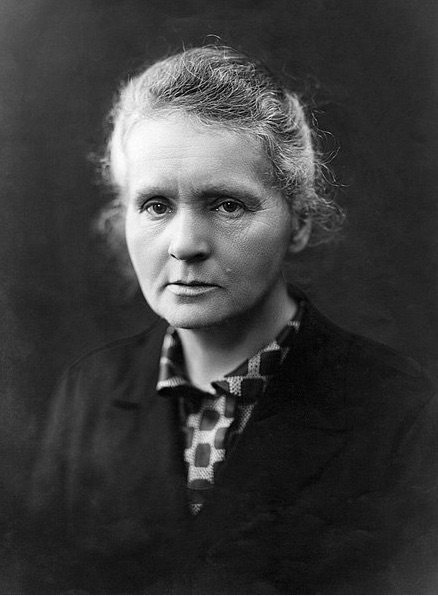
Maria Salomea Skłodowska was born on November 7, 1867 in Warsaw, Poland, the youngest of 5 children. After Marie’s birth, her mother, Bronisława resigned from her position as director of a prominent boarding school for girls to raise her family. However, before Marie was 10 years old, her mother was infected with tuberculosis and died in May, 1878.
Maria’s father Władysław was the director of two secondary schools where he taught mathematics and physics. After the Russians took control of the Polish schools and shut down their laboratories, Wladyslaw brought the equipment home, where he schooled his children.
A few months after her mother’s death, Maria was enrolled at a boarding school and subsequently a secondary for girls. She was an excellent student and graduated first in the class in June 1883. Since post secondary schools were closed to females, Maria and her sister Bronisława joined a Polish patriotic institution of higher learning that admitted females.
Since the Sklodowska family had almost no financial resources, Maria promised to work as a governess and provide financial support for Bronisława’s medical studies in Paris in return for similar support from her sister on completion of her studies. In the years that followed, Maria continued to educator herself by reading books while accumulating money for her studies, and in 1891, she left Poland for Paris. She rented a modest apartment in the Latin Quarter to pursue her studies of physics, chemistry, and mathematics at the Sorbonne.
By 1893 Maria had earned a degree in physics and a year later earned a second degree. During her work in Paris, she met Pierre Curie who was an instructor at The City of Paris Industrial Physics and Chemistry Higher Educational Institution. They were married in 1895 and worked together in physics, becoming the most celebrated husband-wide collaboration in the history of physics. In 1903, Pierre and Maria along with physicist Henri Becquerel were awarded the Nobel Prize in Physics for their work in the new “theory of radioactivity.” Three years later, Pierre was killed when he was rushing to a meeting and darted out into the path of a horse-drawn wagon.
Eighteen months after Pierre’s death, Maria, who came to be called Marie since her arrival in Paris became romantically involved with her husband’s former protégé, Paul Langevin, a distinguished mathematician and physicist. It was a clandestine affair, because Langevin was married. In 1911, Marie was notified that she had won the 1911 Nobel Prize in Chemistry for her discovery of the elements polonium and radium. She was not only the first woman to receive a Nobel Prize but also the first person to receive two of them. However, during the First Solvay Conference at which the world’s most distinguished physicists were gathered, rumors began to spread about Marie’s relationship with Langevin and one of the most famous scandals in the history of science was ignited by the Paris press.
In spite of all the gossip, Marie continued her work in physics and in 1920 founded the Curie Institute in Paris, and in 1932 the Curie Institute in Warsaw. Tragically, Marie Curie died 2 years later at age 66 of aplastic anemia, caused by her exposure to radiation during her research. A remarkable woman and scientist, Marie Currie is immortalized in the history of science as one of its most gifted contributors.
In spite of her challenges in life, and her suffering from aplastic anemia, Marie maintained a positive outlook throughout her life, once stating, “Nothing in life is to be feared, it is only to be understood. Now is the time to understand more, so that we may fear less.”
